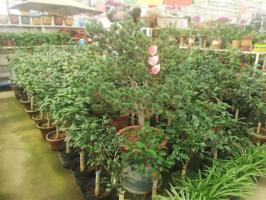Introduction
When you think of buying a new plant for your garden or yard, you might have come across the term "bare root plant." But what is a bare root plant? In this article, we will explore the world of bare root plants and discover its benefits.
Definition of Bare Root Plant
A bare root plant is a plant that has been removed from its soil and sold without a pot or container. The roots of the plant are exposed, hence the name "bare root." These plants are mostly sold during the dormant season, which is usually between fall and winter. Bare root plants are usually shipped and sold in bundles.
Advantages of Bare Root Plants
1. Cost-effective: Bare root plants are often less expensive than potted plants because they are easier and cheaper to cultivate, store and transport.
2. More variety: Because of the ease in transport, bare root plants can come from different locations and can have more variety than potted plants.
3. Healthier roots: Bare root plants have healthier roots because they are not root-bound like potted plants. Bare root plants have more room for root growth and they can establish faster once planted in the ground.
How to Plant Bare Root Plants
1. Soak in water: Before planting, soak the plant's roots in a bucket of water overnight to moisten the roots and encourage growth.
2. Dig a hole: Dig a hole that is twice as wide as the roots and deep enough to accommodate the roots without bending them. Remove any rocks, grass or weeds in the area.
3. Add fertilizer: Mix some fertilizer or compost into the soil, making sure there is a good balance of nutrients for the plant to grow.
4. Plant the tree: Place the tree in the center of the hole and spread out the roots evenly. Fill the hole with soil, gently tamping it down with your foot.
5. Water and Mulch: Water the plant and add some mulch on top to help retain moisture and keep the roots cool.
Conclusion
In conclusion, bare root plants are an economical and healthy choice for your garden. They may require a bit of extra effort to plant, but they offer many benefits over potted plants in the long run.

 how many times do yo...
how many times do yo... how many planted tre...
how many planted tre... how many pine trees ...
how many pine trees ... how many pecan trees...
how many pecan trees... how many plants comp...
how many plants comp... how many plants can ...
how many plants can ... how many plants and ...
how many plants and ... how many pepper plan...
how many pepper plan...
































